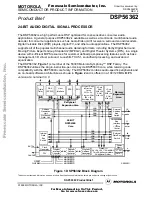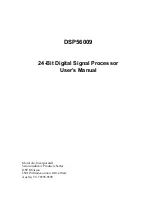
Zynq-7000 AP SoC and 7 Series FPGAs MIS v4.1
554
UG586 November 30, 2016
Chapter 4:
LPDDR2 SDRAM Memory Interface Solution
Verify Pin Changes and Update Design
This feature verifies the input XDC for bank selections, byte selections, and pin allocation. It
also generates errors and warnings in a separate dialog box when you click
Validate
on the
page. This feature is useful to verify the XDC for any pinout changes made after the design
is generated from the MIG tool. You must load the MIG generated
.prj
file, the original
.prj
file without any modifications, and the XDC that needs to be verified. In the Vivado
tool, the Re-customize IP option should be selected to reload the project. The design is
allowed to generate only when the MIG DRC is met. Ignore warnings about validating the
pinout, which is the intent. Just validating the XDC is not sufficient; it is mandatory to
proceed with design generation to get the XDC with updated clock and phaser related
constraints and RTL top-level module for various updated Map parameters.
The Update Design feature is required in the following scenarios:
• A pinout is generated using an older version of MIG and the design is to be revised to
the current version of MIG. In MIG the pinout allocation algorithms have been changed
for certain MIG designs.
• A pinout is generated independent of MIG or is modified after the design is generated.
When a design is generated from MIG, the XDC and HDL code are generated with the
correct constraints.
Here are the rules verified from the input XDC:
• If a pin is allocated to more than one signal, the tool reports an error. Further
verification is not done if the XDC does not adhere to the uniqueness property.
• Verified common rules:
°
The interface can span across a maximum of three consecutive banks.
°
Interface banks should reside in the same column of the FPGA.
°
Interface banks should be either High Performance (HP) or High Range (HR). HP
banks are used for the high frequencies.
°
The chosen interface banks should have the same SLR region if the chosen device is
of stacked silicon interconnect technology.
°
V
REF
I/Os should be used as GPIOs when an internal V
REF
is used or if there are no
inout and input ports in a bank.
°
The I/O standard of each signal is verified as per the configuration chosen.
°
The VCCAUX I/O of each signal is verified and provides a warning message if the
provided VCCAUX I/O is not valid.
• Verified data pin rules:
°
Pins related to one strobe set should reside in the same byte group.
°
The strobe pair (DQS) should be allocated to the DQS I/O pair.
















































